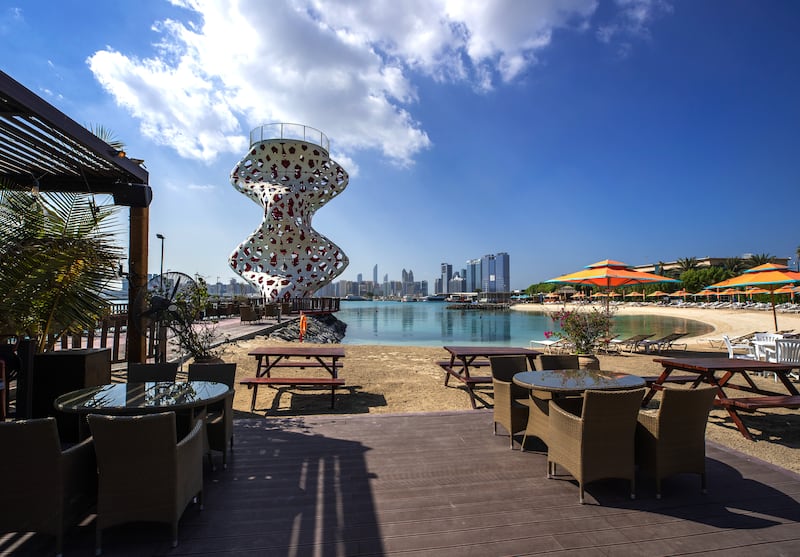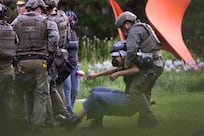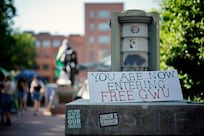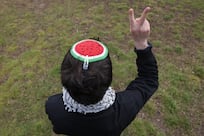This month’s big storm will live long in the memory, just as previous weather events are visceral episodes for those who experienced them.
Residents in 1982 remember that low-lying areas of Abu Dhabi were flooded for weeks after that year’s big storm and that one neighbourhood was temporarily nicknamed the Lake District by some.
In 2016, people recall the sky darkening to an ominous shade of gunmetal grey before high winds – speeds of more than 120 kilometres an hour were recorded on Abu Dhabi island – and thunderous rain showers swept in. That storm left behind a trail of fallen trees, felled sun shades and a sense of collective wonder at the destructive power of nature.
Everyone has their own story after last week’s storm, too, with many people and communities still dealing with its aftermath.
One of those stories belongs to The Club, a fixture of Abu Dhabi since 1962, situated on coastal land granted by UAE Founding Father Sheikh Zayed, then Ruler of Abu Dhabi, in the late 1960s.
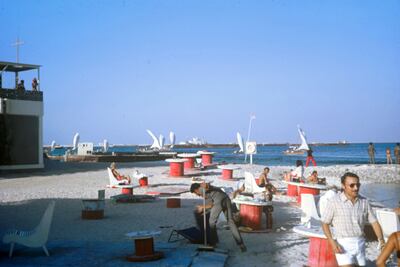
The leisure and beach club complex, sometimes wrongly referred to as “The British Club”, reckons to have welcomed more than 50,000 Abu Dhabi residents from over 80 countries into its membership over the years.
Those who are members (this writer is among them) value the relaxed atmosphere and sense of community that is found within its compound. That laidback feel was disrupted by last week’s weather, while the communal endeavour rose to the fore as the rain poured in.
Like so many other stories that are still being told in the days after record-breaking rainfall hit the country, The Club’s narrative is one of round-the-clock clean-up operations and of a resilient community pulling together.
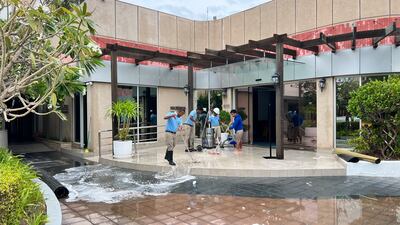
Before the first of last week’s storm waves, Kyle Wykes, The Club’s general manager, said they had “battened down the hatches” to limit potential damage, storing furniture, removing fixtures and preparing as thoroughly as they could.
The first wave swept across the site at about midnight, the beginning of three sequences of extreme weather. The second wave was more intense than the first. The third wave was even stronger than the second. That final one, Mr Wykes said, “really hit us quite hard”.
One of the challenges, he said, was the sheer volume of water that was dumped by the storm, testing drainage systems, guttering and the water-tightness of the older parts of the site to a point beyond their limits.
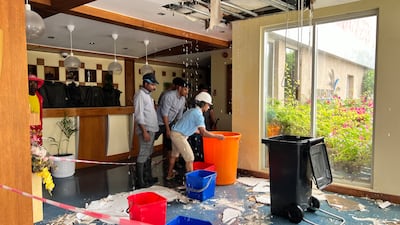
The storm delivered its own rhythms within those hours. With each break, damage was assessed, water pumps were deployed, and a more manual clear-up was undertaken with floor wipers and squeegees, before the next part of the weather front moved in.
“It was a case of ‘let’s get as much water out of the buildings as possible, until the next one hit’,” Mr Wykes said. Maintaining power across the sprawling site became a compounding issue.
Some of the toughest work was undertaken on Tuesday evening after the worst of the final wave had subsided. “We worked through the night,” he said, with all staff on site working non-stop to clear up.
“They were resilient, but they were very tired after trying to keep the water out all day. We called in a few members to come down and help us when the storm passed and spent the night emptying the buildings of water. It was fantastic to see everyone work together.”
Wednesday morning brought another reckoning, with the daylight hours allowing for a fuller assessment of the storm damage. “It wasn’t a pretty picture,” he said.
Later that day, Mr Wykes sent an email to the membership outlining the “significant damage” that The Club had sustained. His words provided a long roll-call of damage across the site and his pictures, posted at the bottom of the email, provided graphic evidence of collapsed ceilings and flooded areas.
I met Mr Wykes on site more than a week after the rain, and as we walked around the compound it would have been easy to think the storm only existed in some kind of fever dream.
The site swelled with people on Wednesday evening, the beach was neat and tidy, despite the loss of a large amount of sand during the storm, and most of its outlets were open.
Look a little closer and the scars were evident. The site’s signature restaurant, Vista, will reopen at the weekend, but other parts of the compound will take longer to recover. The library sustained damage and is shut, a section of the main reception area requires attention, one of the function rooms needs refurbishment. The list goes on.
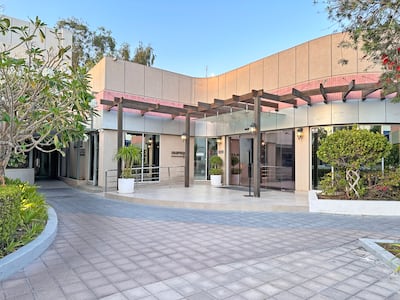
Thankfully, the colony of Club cats – Mr Wykes estimates about 30 cats call the site home – are all accounted for post-storm and in good health.
The facility, now more than 60 years old, has seen its share of external crises over the years and recovered from them, most recently the coronavirus pandemic that forced a shutdown for a period, but further back there was the 1990 Gulf War, when the Mina Zayed area was full of troops and helicopters whooshed overhead, as well as multiple economic cycles and those previous storms.
So, on one level, this is another chapter in the same book. On another, it is a different volume all together.
In the past few days, Mr Wykes says he has been asked by members what practical help they can offer? The answer, he says, is to use The Club at every opportunity, as the revenues generated will help speed up recovery.
There is a universal appeal to that message. Everyone benefits when a helping hand is extended.
